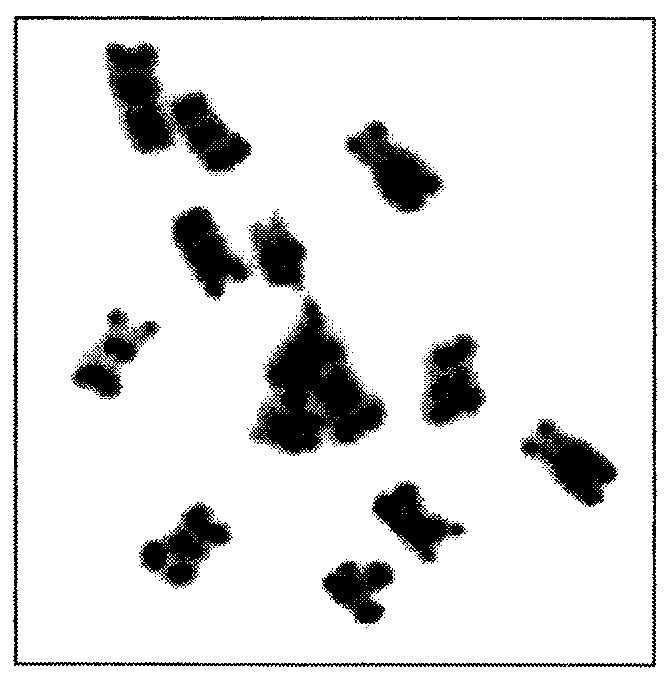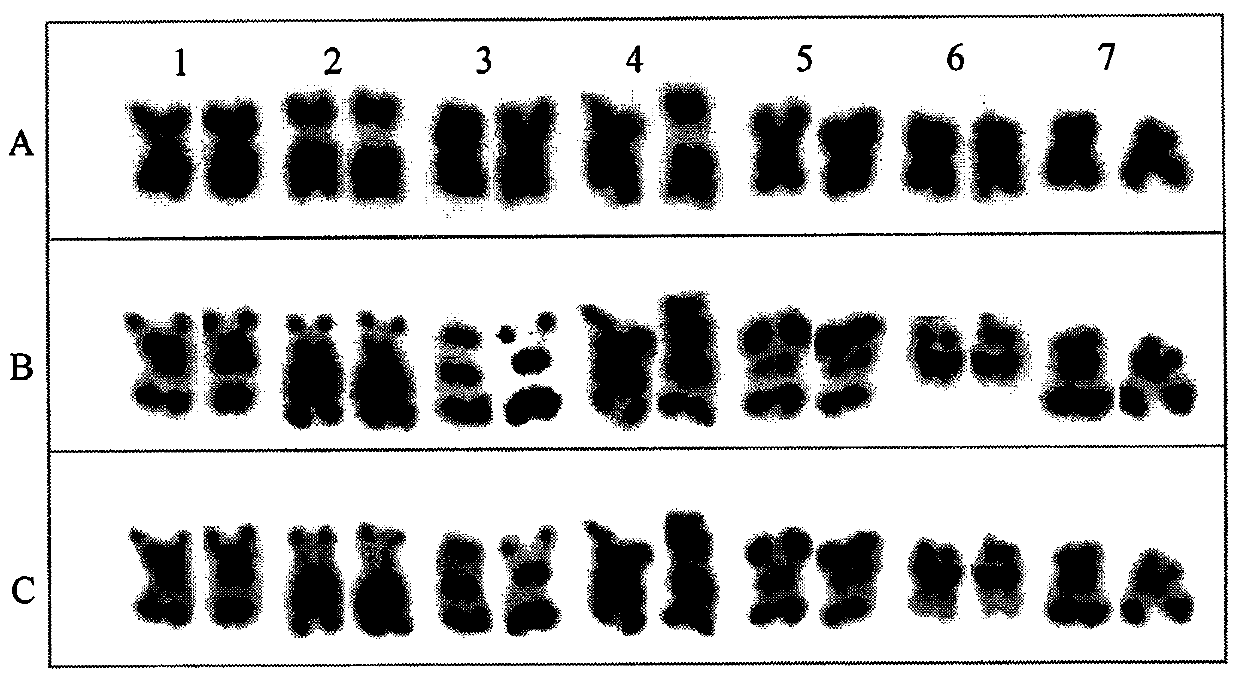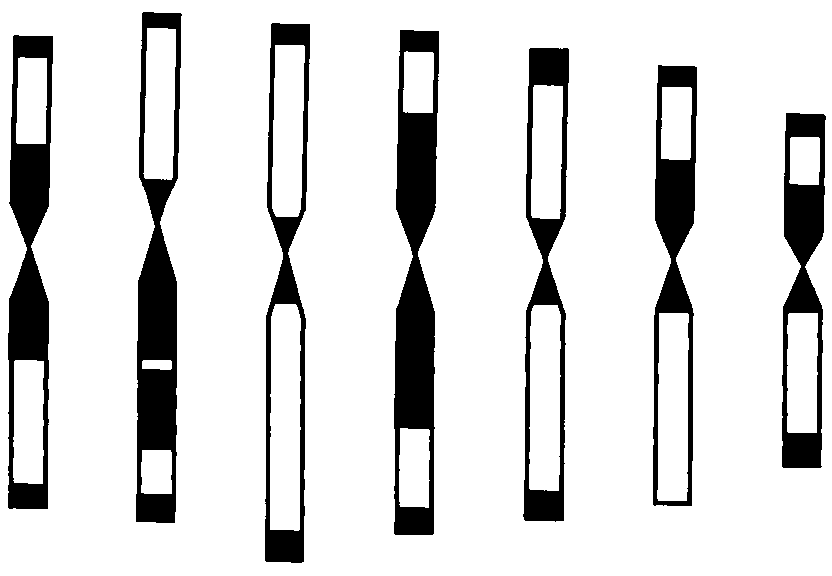Method for quickly establishing metaphase chromosome karyotype of cucumber through genomic in-situ hybridization
A technology of chromosome karyotype and in situ hybridization, which is applied in the direction of biochemical equipment and methods, microbe determination/inspection, etc., can solve the problems of accelerating the progress of cucumber cytogenetics research, achieve easy distinction, increase concentration, probe clear signal effect
- Summary
- Abstract
- Description
- Claims
- Application Information
AI Technical Summary
Problems solved by technology
Method used
Image
Examples
Embodiment Construction
[0025] The implementation procedure of the method for quickly constructing the cucumber metaphase chromosome karyotype by in situ hybridization of the cucumber genome of the present invention comprises:
[0026] (1) Genomic DNA extraction: Take cucumber young leaves, and use CTAB method to extract cucumber genomic DNA. The specific method refers to the method of Murray et al. (1980). Extract high-concentration cucumber genomic DNA for later use.
[0027] (2) Preparation of probes: Genomic DNA probes were labeled using the nick translation method. According to the instructions of the probe labeling kit, use Digoxigenin-11-dUTP (purchased from Roche Company) to label the cucumber genomic DNA with a probe, and set aside.
[0028] (3) Material preparation: Take appropriate root tips from cucumber plants or germinated seeds, pretreat them in 0.002M 8-hydroxyquinoline solution at 25°C for 3 hours to enrich mid-stage dividing cells, and then put them into volume ratio Fix in 3:1 E:...
PUM
 Login to View More
Login to View More Abstract
Description
Claims
Application Information
 Login to View More
Login to View More - R&D
- Intellectual Property
- Life Sciences
- Materials
- Tech Scout
- Unparalleled Data Quality
- Higher Quality Content
- 60% Fewer Hallucinations
Browse by: Latest US Patents, China's latest patents, Technical Efficacy Thesaurus, Application Domain, Technology Topic, Popular Technical Reports.
© 2025 PatSnap. All rights reserved.Legal|Privacy policy|Modern Slavery Act Transparency Statement|Sitemap|About US| Contact US: help@patsnap.com



